“If there is no struggle, there is no progress…Power concedes nothing without a demand. It never did and it never will." —Frederick Douglas
A Situation Briefing on Ethical Jewelry
About 3.7 million people died in diamond funded wars in the 1980s and ‘90s, and thousands more have died since. Many large-scale mining companies who have allegedly committed environmental and social atrocities are now part of the Responsible Jewellery Council, an organization defining “responsible jewelry” in the North American market and beyond.
Meanwhile, we still see zero restitution, truth, or reconciliation. Tens of millions of small-scale miners around world are still today being poisoned by mercury from gold mining, destroying the environment just so they can scrape by to survive in their destitute lives.
All this is in the name of luxury products and love symbols.
The question is, why? And what can we do about it?
A Starting Over Place
Let us begin anchored in our common humanity, our concern for our children’s children and the very ecology which sustains ourselves and our planet.
The first step to right any wrong is acknowledging what has taken place in the past, and then taking action toward restitution.
For example, in recent years, we have learned of more abuse of some Catholic priests in Ireland, in Argentina, Pennsylvania, and around the globe. People in these faith communities, and others in civil society, have called for justice for the victims.
Imagine if the Pope and his bishops were to say that any actions of our priests before 2012 is absolved because the Church had created, at that date, a “responsible priests” standard.
There would be moral outrage. Now, let us consider what has happened in the jewelry world.
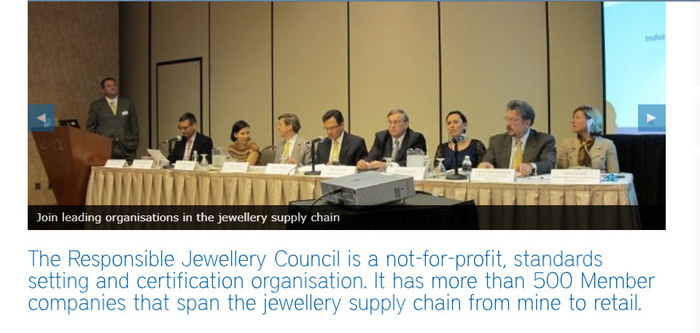
Screenshot of the Responsible Jewellery Council’s homepage. White men (and a few white women) rule.
The Responsible Jewellery Council is led by a kind of synod composed of multinational bishops. It was founded by 14 companies in 2004, among them Rio Tinto, De Beers, BHP Billiton, Cartier, Newmont Mining, Signet Group, Tiffany & Co, Zales Corp, and Jewelers of America.
Together, they have written an encyclical, defining a “responsible jewelry” doctrine to their 1100-plus members. Foundational to this doctrine is continuity, the embracing of conservatism within the framing of the past.
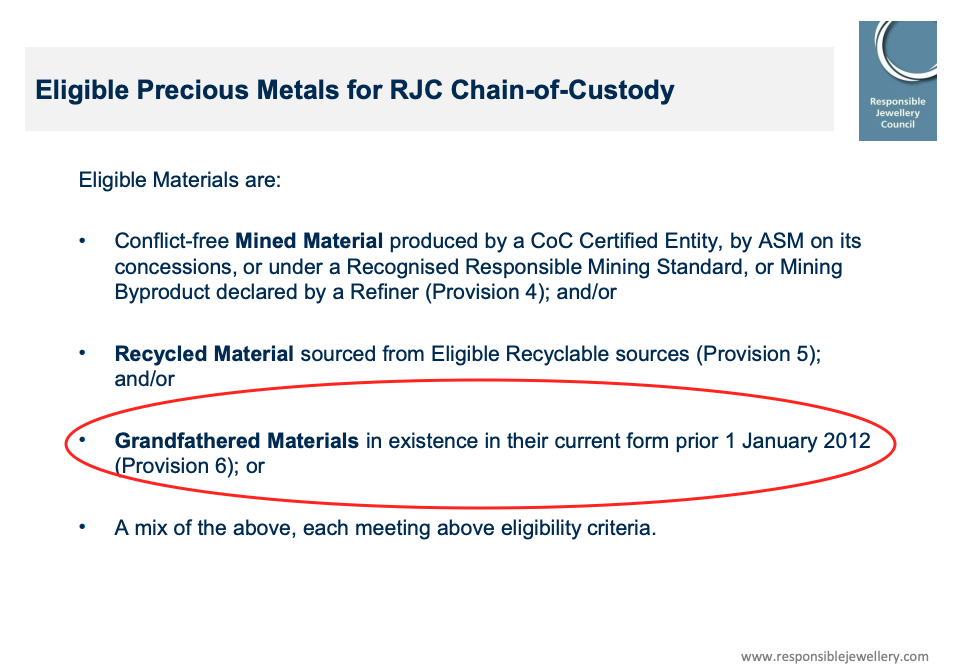
In this, a Grandfather clause, the wealth gained through the previous actions of members is officially declared “responsibly sourced.”
Not just the wealth, but the actions that obtained that wealth.
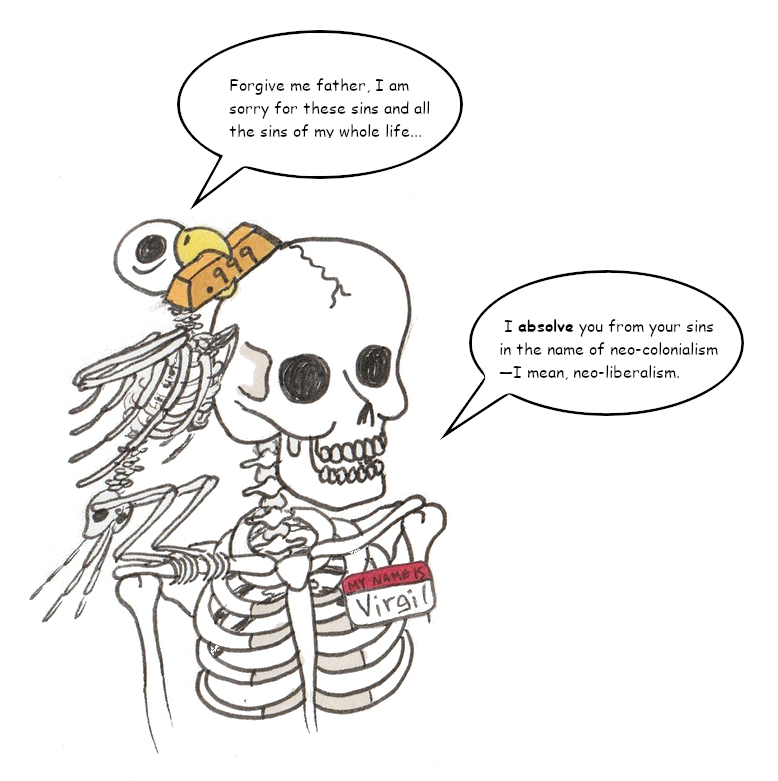
De Beers, one of the original 14 founding companies of the Responsible Jewellery Council back in 2004—and who controlled almost 90% control of diamonds during the blood diamond wars in the 1980s, and tried to maintain its monopoly into the ‘90s by hoovering up all diamonds in Africa—is forgiven.
This forgiveness allowed the birth of the Kimberley Process, a certification that lacks credibility, a certification whose child is the “conflict free diamond” narrative. In addition to all the well-documented issues undermining Kimberley (see the Sixth Russian Doll: Kimberley Process’ Damn Lies”) we are told that we can be “conflict free” without any truth, reconciliation, or restitution to impacted communities.
There’s no way of knowing how many of those diamonds from that time still sit in shoe boxes in De Beer’s London offices. But it isn’t just diamonds that are absolved from past sins. Follow the links to these companies: Anglo Gold, BHP Billiton, Newmont, Rio Tinto (read about their “Bougainville genocide” ) is now producing certified “responsible” gold.
The truth is, the gold and diamonds in your wedding ring is likely produced from industry activities that result in ecocide and possibly through human rights atrocities.
Yet all is forgiven in a standard contingent upon erasing memory and revisionist history.
This forgetting the past is merely a cover up for crimes that, to paraphrase historian Nikhil Pal Singh, are hidden in plain sight.
Because of this Grandfather clause, there can be no ethics.
Rather, I should say that any version of ethics is going to be deeply flawed because the past is prologue. The new ethics are a continuity, a rebranded narrative that updates the current practices to create a forward-facing narrative which is merely a cover up.
Even without raising the Grandfather Clause as an issue, the Call To Action from Human Rights Watch’s February 2018 critique of the Responsible Jewellery Council, signed by 29 other organizations, states: “The Responsible Jewellery Council promotes standards that allow companies to be certified even when they fail to support basic human rights.” This reconfirms Earthworks’ 2013 More Shine Than Substance: How RJC Certification Fails to Create Responsible Jewelry.
Yet between 2013 and today, the Council has grown from 400 members to over 1100. Much of this grown has come from retail jewelers, which act as a quasi-evangelical arm of the Responsible Jewellery Council.
We may conclude, therefore—as I have in the Exposé—that attempts to influence the Responsible Jewellery Council through civil engagement have failed to produce desired results.
The exploited producer communities remain exploited producer communities. What is taking place is mere shapeshifting—when instead, we should heed Dr. Martin Luther King Jr.’s insightful statement: “True compassion is more than flinging a coin to a beggar; it comes to see that an edifice which produces beggars needs restructuring."
Past is Prologue
White papers, international agencies detailing chains of custody or bottom line numbers, conceptual constructs of what may be ethical or not, written on computer screens in fine offices, easily separate us from proximity to pain.
They do not change the edifices.
What we have here is a fundamental human problem, a method of exchange driven by iron teeth at the ragged edges of globalization where often the most vulnerable are voiceless; where consumption driven by commoditization silently squeezes the humanity out of us, including those working for the big corps in my critiques; where the Chronos-like determinates of capital and time drag us along, caught in the rip tide of history—like actors in a nightmare unaware that they live in a dream.
The nightmare repeats itself over and over, back to the fifteenth century explorers sailing down the coast of Africa in search of slaves and gold.
A new version of the same old story.

Implicit in this old story is the notion that the people in the developing world, where most material used to produce jewelry is sourced, are somehow different from us.
This is nothing less than a subterfuge white nationalism translated to business practices. A company these days knows better than to say that people live in “shithole countries.” Yet the fatal flaws in the standards themselves, and the unwillingness to recognize previous atrocities, often affirm this very sentiment.
Underlying this sentiment is the notion that “others” do not feel the pain when they bleed or love their children like we do. Nor are they worthy of justice based upon any standard of human decency and a clean environment afforded to most of those in civil society.
Thus today, “responsible” or “ethical” jewelry sourcing is often a massive cover up. Keynote speakers at “responsible jewelry” events hide their agenda through talk of sustainability and beneficiation—minor initiatives that, in context to North American market forces, at least, create no real change.
In fact, the person who should be speaking at such conferences, who should be interviewed by trade magazines and bloggers seeking to learn about ethical sourcing, is the diamond miner from Sierra Leone, the survivor with one arm hacked off; or Leonard Fong Roka, who wrote the Bougainville Manifesto.
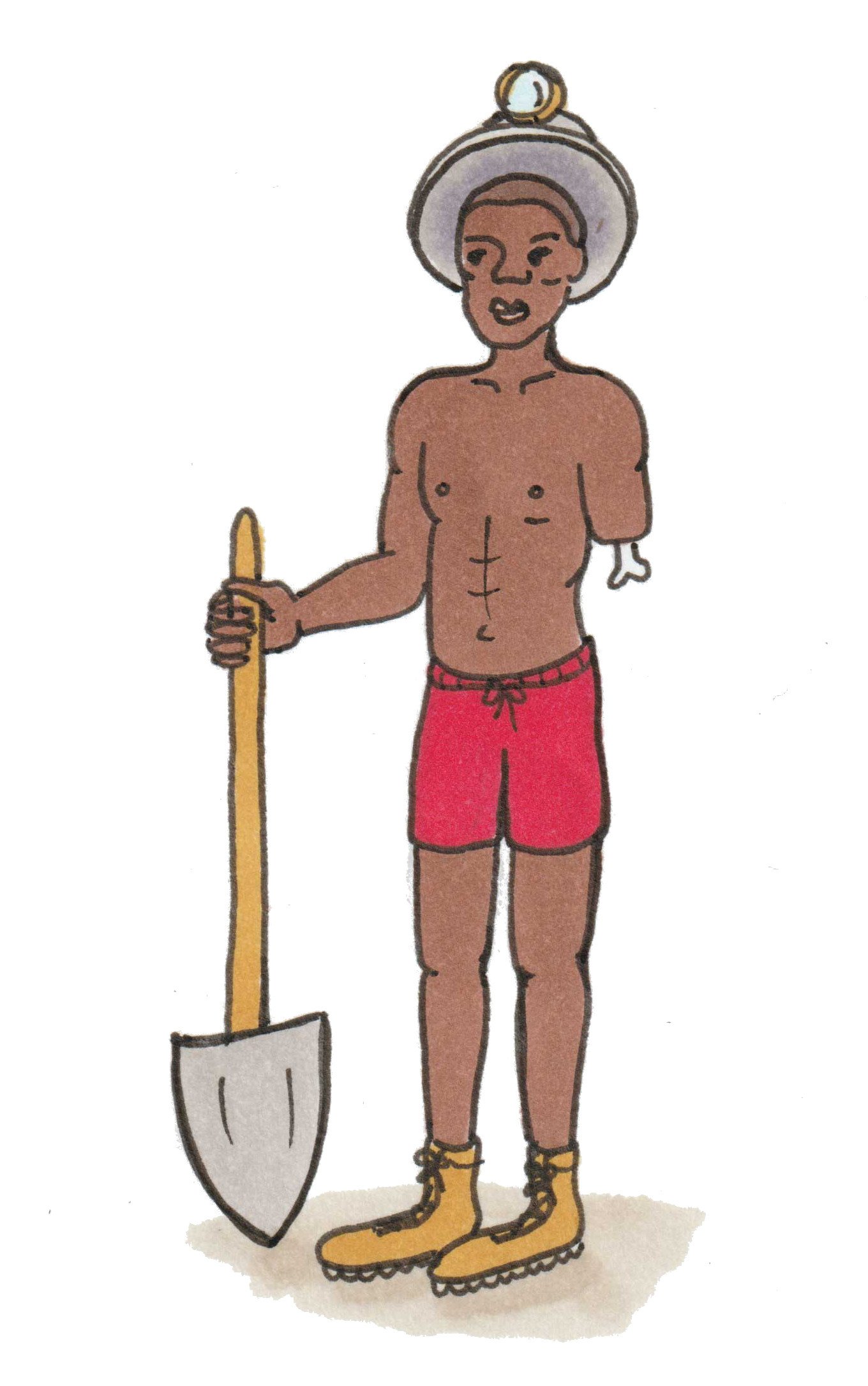
These are the people whose voices matter most at this time. In their breath is the direction for a new ethical jewelry. They should be leading us and defining ethical jewelry.
Perhaps, one day, just as those white Catholic priests responsible will have their day in court, those in our greater human family will be given restitution too—and will become part of the new ethical jewelry narrative.
Until that time, and given the challenge present, the least we can do for producer communities, small-scale miners, is protest against those who deny their rightful responsibility on terms that actually matter to the opposition.
Asking them to change through constructive engagement, as NGOs have done for many years, has not changed the course of the jewelry industry. The paramount priority of large multinationals is the bottom line: assets, accumulation of capital and profitability.
This new campaign must hit their bottom line. Therefore, we take the advice of Virginia C. Drosos, CEO of Responsible Jewellery Council member Signet Corporation, who said in June, 2018, “Business as usual is insufficient, and we together must lead disruptive innovation now.”
Action Item 1: Build a New Coalition
We need to create a new community for action, one that has never been seen before.
NGOs who criticize the jewelry sector from the outside are easily dismissed—accused of not providing solutions. On the other hand, engagement from NGOs has become a form of enabling. The industry uses their feedback to justify that their concerns are being listened to without implementing any changes that impact their bottom line approach.
We must break this cycle. Jewelers need to be out front criticizing the industry. That way, the industry cannot claim that outsiders who don’t understand or want to work constructively are merely taking ignorant pot shots.
We need a coalition of jewelers and a broad sector of NGOs. Human rights organizations and environmental groups are the most obvious players, but any organization focusing in any way on making the world the more beautiful place our hearts know is possible has power in lending their voice. The more we work together, the louder our voice becomes—until it can no longer be ignored.
My company has personally made great strides in this direction with the implementation of our Giving Back program, with offers 20% of sales generated by a broad list of our nonprofit partners.
This collaboration between nonprofits and activist jewelers can help support our efforts in deep structural change in the jewelry section.
Action Item 2: Boycott Responsible Jewellery Council Retailers
Let us then boycott all Responsible Jewellery Council retailers, and other jewelers that endorse their standards.
Let us work together to oppose elements of the ethical jewelry forward-facing responsible jewelry narrative for all the reasons listed by the Human Rights Watch study—and because ethics, in the case of large-scale multinationals, cannot be divorced from truth and reconciliation.
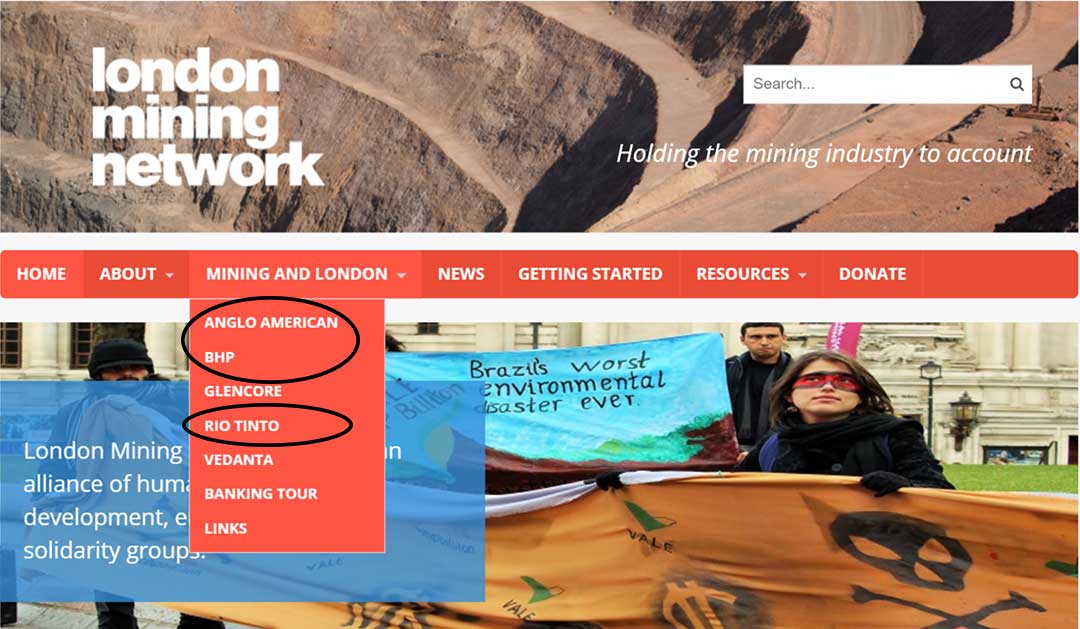
Consider that these three Responsible Jewellery Council members are now producing “responsible” gold, despite a plethora of alleged atrocities—as detailed in the Fourth Russian Doll: Responsible Jewellery Council Chain of Custody Scheme Exposed.
One day, perhaps the Responsible Jewellery Council will be something other than a trade association. Maybe it will become a true multi-sector organization with industry watchdogs and small-scale miners in decision-making capacities, and excellent standards such as those of IRMA in place.
But until that time, the boycott will slow the forward-facing market narrative that anchors their insufficient notion of “responsible jewelry” in North America and beyond.
Action Item 3: Debunk "Eco-friendly" Recycled Gold
These days the mainstream trade—in North America, at least—has doubled down on the recycled gold narrative as ethical gold. It is a means of maintaining the status quo, or diverting the focus which should be on producer communities: the people who dig in the earth to feed their families and need market support.
Recycled gold was once best practice. It raised awareness of sourcing issues in the market. I was an early adopter when Hoover and Strong, the most ethical of all supply houses in North America, first provided it in 2007. I still use it when I cannot obtain Fairtrade Gold.
However, recycled gold and dirty gold come from the same place. For a jeweler to base their ethics on recycled gold is specious. It relies upon public ignorance of the trade’s true practices.
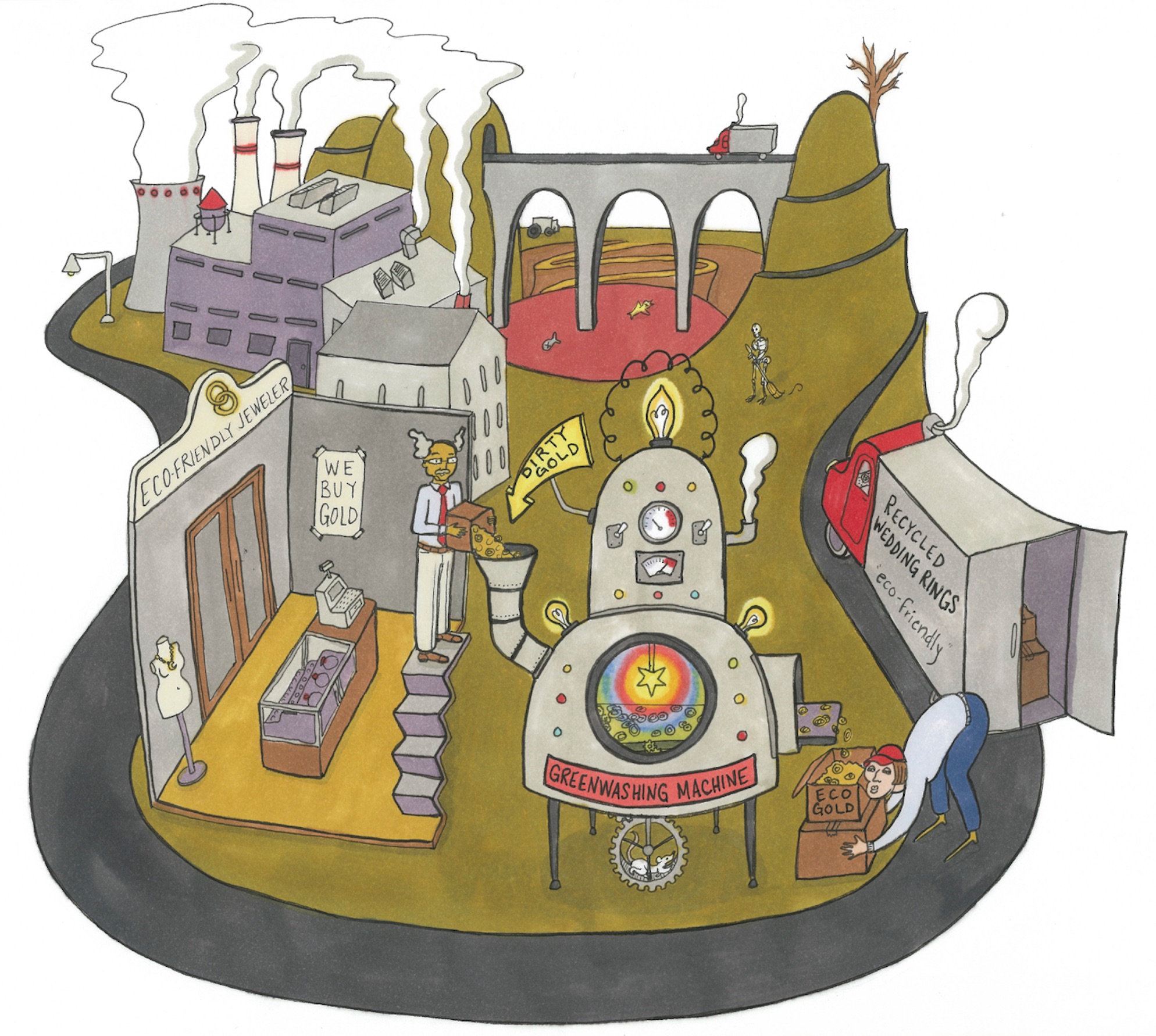
Read more on recycled gold here.
This is a call out to bloggers, journalists, and others who have the power to call out jewelers who base their ethical claims only on their “eco-friendly” recycled gold story.
This gold does nothing to eliminate poverty or reduce mercury contamination among the twenty-five million small-scale gold miners worldwide.
Hoover and Strong has always been at the forefront of North American ethical sourcing. They offer Fairtrade and Fairmined Gold. We have in place a supplier to anchor a true ethical jewelry movement with production. There is no excuse for jewelers who claim an ethical stance not to use gold from small producers.
Action Item 4: Fairtrade Gold is the Best Initiative
Fairmined Gold and Fairtrade Gold are basically the same in context to on-the-ground principles and standards that support small-scale mining communities. The two initiatives were developed together: see the supplementary article Fairtrade/Fairmined Gold in the US/UK.
However, the difference between the brands of Fairtrade and Fairmined Gold is massive.
Right now, in the US, there is just one Fairtrade Gold jeweler: my company. This must change.
Igniting the market and changing consumer perception that is most going to benefit miners in the long run.
Jewelers, consumers, and bloggers must support a new story consolidated around the Fairtrade Gold brand, following the success of European jewelers.
In essence: ridicule “eco-friendly” recycled gold. Consolidate around Fairtrade Gold as the most ethical choice to change the market narrative toward an ethics focused on small-scale mining certified from source to market by Fairtrade.
Action Item 5: Debunk The “Conflict Free Diamond” Narrative
Diamond sales are around half of all jewelry revenue, which makes the “conflict free diamond” narrative a keystone of jewelry marketing.
This “conflict free” story needs to be disrupted. Instead, we need to describe a diamond’s ethical veracity based upon who mined it, where it was mined, and where it was cut.
A “Boycott Conflict Free Diamonds” campaign would directly attack the core deception: that it is acceptable to create such a designation without truth, reconciliation, and restitution to the 3.7 million people killed in (and the millions more affected by) the blood diamond-funded wars.
This is an initiative that must be part of an overall strategy to disrupt the market.

Continue on to the Table of Contents
Return to the Foreword: Birth of the Movement
Return to the Landing Page

**All writing and images are open source, under Creative Commons 3.0. Any reproduction of this material must back link to the landing page, here. For high resolution images for publication, contact us at expose(AT)reflectivejewelry.com.**